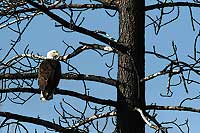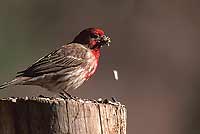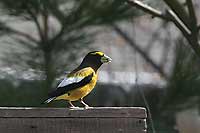The Christmas Bird Count |
|
Near the end of the 19th century, plume hunters were decimating heron and egret rookeries, shooting birds for their feathers which were the rage of the time for decorating ladies’ hats and clothing. By 1900, over 5 million birds were being indiscriminately killed for their feathers, all to fuel a millinery trade until two Boston socialites stepped forward.  Harriet Hemenway, an amateur naturalist, and her cousin, Minna Hall, plucked from the Boston elite a group of women that banded together to end this destructive practice. They urged their friends to stop wearing feathered hats, and many women flocked to the newly formed society of women for the protection of birds. The fledgling society rapidly grew and the success of their action hatched two important landmarks in avian circles – the passage of the Weeks-McLean Law, known as the Migratory Bird Treaty Act, and the hatching of the Massachusetts Audubon Society which would later on become the National Audubon Society. Harriet Hemenway, an amateur naturalist, and her cousin, Minna Hall, plucked from the Boston elite a group of women that banded together to end this destructive practice. They urged their friends to stop wearing feathered hats, and many women flocked to the newly formed society of women for the protection of birds. The fledgling society rapidly grew and the success of their action hatched two important landmarks in avian circles – the passage of the Weeks-McLean Law, known as the Migratory Bird Treaty Act, and the hatching of the Massachusetts Audubon Society which would later on become the National Audubon Society.Around this same time, a flock of birdwatchers, led by Frank Chapman, decided to enjoy the Christmas holidays by counting birds instead of shooting them. They bagged their quarry with binoculars, not shotguns. Little did these birders know, scattered across the country, that their day afield would hatch the worldwide phenomenon called the CBC or better known as the Christmas Bird Count.  This year represents the 117th annual Christmas Bird Count. The longest citizen-science survey in the world, you could choose to participate in over 2,300 locations across the U.S. or different nations, joining thousands of birders searching for songbirds, waterfowl, raptors and rarities. “The Count” as some birders call it, is held on one day during a two-week period between December 14 and January 5, with “Count Week” representing the three days prior and three days after The Count. If you’re up for a good time, Moab’s CBC is on December 17. Teams are assigned to areas within the count’s circle, a 15-mile diameter circle centered on Coffee Pot Rock. The count area includes diverse habitats like uplands, the Colorado River, Matheson Preserve and residential areas in town and Spanish Valley.  The Moab count usually averages about 70 species. Most of these birds are regulars - juncos and towhees and robins and bluebirds that winter in the valley. Some species may be represented by a lone individual, while others may number in the hundreds. Of course, you never know what unexpected birds might show up. Eastern blue jays or brown thrashers. A Northern pygmy owl or flock of evening grosbeaks. The rarities make for exciting finds, but it is the core of regular species that intrigue researchers who analyze population trends out of the years of data. Changes in local populations may be linked to habitat fragmentation or even global climate change, while the unusual species might represent migrants blown off course. Besides contributing to science, you’ll also be a part of history. Reaching across the decades, you’ll have the company of Hemenway and Hall, Chapman and even Audubon himself. For more information on the Moab CBC, contact Marcy Hafter at 435-259-6197 or marcymoab@yahoo.com. A potluck breakfast will be held at the Nature Conservancy office, 900 W. Kane Creek Blvd, on December 18.
|
|
